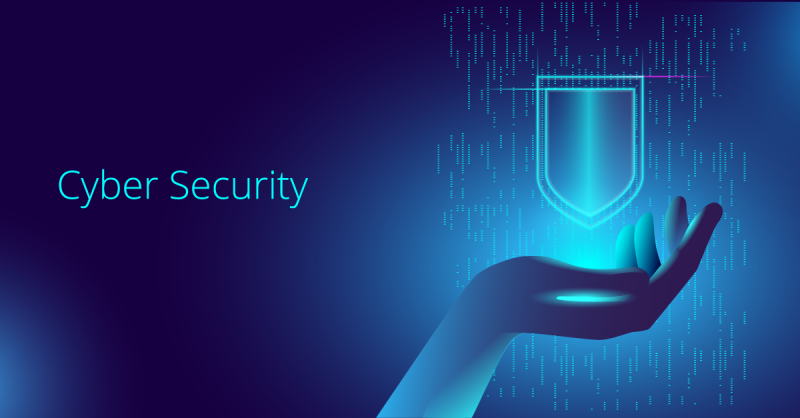Cybersecurity is the practice of protecting systems, networks, applications, and data from digital attacks, unauthorized access, theft, or damage. It encompasses a wide range of technologies, practices, and strategies designed to safeguard digital assets against ever-evolving cyber threats.
As technology becomes increasingly integrated into every aspect of our lives, cybersecurity has become critical for individuals, businesses, and governments to ensure the safety of sensitive information and the smooth functioning of digital systems.
Core Objectives of Cybersecurity
- Confidentiality
Ensuring that information is accessible only to those authorized to access it. This includes measures like encryption, secure access controls, and privacy protections. - Integrity
Maintaining the accuracy and trustworthiness of data. Cybersecurity ensures that information cannot be altered or tampered with by unauthorized parties. - Availability
Ensuring that systems, networks, and data are available when needed, even in the face of attacks like Distributed Denial of Service (DDoS) or system failures.
Key Components of Cybersecurity
- Network Security
Protects the integrity and usability of a network and its data. Techniques include firewalls, intrusion detection systems (IDS), and virtual private networks (VPNs). - Application Security
Focuses on securing software and applications from vulnerabilities that attackers could exploit. This includes secure coding practices, regular patching, and application testing. - Information Security (InfoSec)
Protects sensitive data, such as financial records or personal information, through encryption, access control, and data masking. - Operational Security (OpSec)
Involves managing and protecting day-to-day operations, including data storage, employee access controls, and procedures for data handling. - Endpoint Security
Secures devices such as computers, smartphones, and tablets that connect to a network. This includes antivirus software, endpoint detection, and device encryption. - Cloud Security
Focuses on protecting data and applications hosted in cloud environments. This includes secure cloud configurations, identity management, and encryption. - Identity and Access Management (IAM)
Ensures that only authorized users have access to systems, data, and resources. Multi-factor authentication (MFA) and role-based access controls are common IAM techniques. - Disaster Recovery and Business Continuity
Prepares organizations to recover quickly from cyberattacks, natural disasters, or system failures while minimizing downtime and data loss.
Types of Cyber Threats
- Malware
Malicious software such as viruses, worms, ransomware, and spyware designed to disrupt, damage, or gain unauthorized access to systems. - Phishing
Deceptive attempts to trick individuals into revealing sensitive information, such as passwords or credit card details, often via fraudulent emails or websites. - Ransomware
A form of malware that encrypts a victim’s data and demands payment to restore access. - Denial of Service (DoS) and Distributed Denial of Service (DDoS) Attacks
Overwhelm systems or networks with traffic to render them inoperable. - Man-in-the-Middle (MITM) Attacks
Intercept communications between two parties to steal or manipulate information. - SQL Injection
Exploits vulnerabilities in applications to execute malicious SQL queries, potentially compromising databases. - Zero-Day Exploits
Attacks that take advantage of vulnerabilities before they are identified and patched. - Advanced Persistent Threats (APTs)
Prolonged and targeted attacks by skilled adversaries aiming to steal data or sabotage systems.
Importance of Cybersecurity
- Protecting Sensitive Data
Cybersecurity ensures the confidentiality of personal, financial, and intellectual property data. - Maintaining Trust
For businesses, strong cybersecurity fosters customer trust, safeguarding brand reputation. - Ensuring National Security
Governments use cybersecurity measures to protect critical infrastructure, including power grids, healthcare systems, and defense networks. - Enabling Innovation
Secure systems allow for technological advancements without compromising safety. - Compliance with Regulations
Many industries are governed by laws and standards (e.g., GDPR, HIPAA) that mandate robust cybersecurity practices.
Cybersecurity Tools and Technologies
- Firewalls
Act as barriers to block unauthorized access while allowing legitimate traffic. - Encryption
Converts data into unreadable formats unless decrypted with a key. - Antivirus Software
Detects and removes malicious software from systems. - Intrusion Detection and Prevention Systems (IDPS)
Monitors network traffic for suspicious activities and blocks potential threats. - SIEM (Security Information and Event Management)
Provides real-time analysis of security alerts generated by hardware and software. - Penetration Testing Tools
Simulate attacks to identify vulnerabilities before hackers exploit them. - AI and Machine Learning
Enhance threat detection by analyzing patterns and predicting attacks.
Cybersecurity Careers
- Cybersecurity Analyst
Monitors networks, investigates breaches, and implements security measures. - Ethical Hacker/Penetration Tester
Simulates cyberattacks to find vulnerabilities and recommend fixes. - Network Security Engineer
Designs and implements secure networks. - Incident Response Specialist
Handles security breaches and minimizes their impact. - Chief Information Security Officer (CISO)
Leads an organization’s cybersecurity strategy. - Cryptographer
Develops encryption algorithms to secure data. - Forensic Analyst
Investigates cybercrimes by analyzing compromised systems and data.
Challenges in Cybersecurity
- Rapidly Evolving Threat Landscape
Cybercriminals continuously develop sophisticated attacks, requiring constant vigilance and updates. - Skill Shortages
There is a significant gap in skilled cybersecurity professionals globally. - Budget Constraints
Organizations often struggle to allocate sufficient resources for comprehensive cybersecurity. - Human Error
Employees remain one of the weakest links in security, making education and awareness vital. - Integration of Emerging Technologies
Technologies like IoT, AI, and blockchain bring new vulnerabilities.
The Future of Cybersecurity
- Increased Automation
AI and machine learning will play larger roles in detecting and responding to threats. - Focus on Cyber Resilience
Emphasis will shift from prevention to resilience—ensuring organizations can recover quickly after an attack. - Quantum Computing Impacts
Quantum technologies may break traditional encryption, requiring new cryptographic solutions. - Global Collaboration
Nations and organizations will need to work together to address cross-border cyber threats. - Cybersecurity as a Core Curriculum
Cybersecurity education will become a priority for businesses, schools, and governments to foster awareness and skill development.
Cybersecurity is a vital field at the intersection of technology, policy, and innovation. It protects the digital backbone of modern society and offers an exciting, dynamic career path for those eager to tackle complex challenges and make a significant impact.

